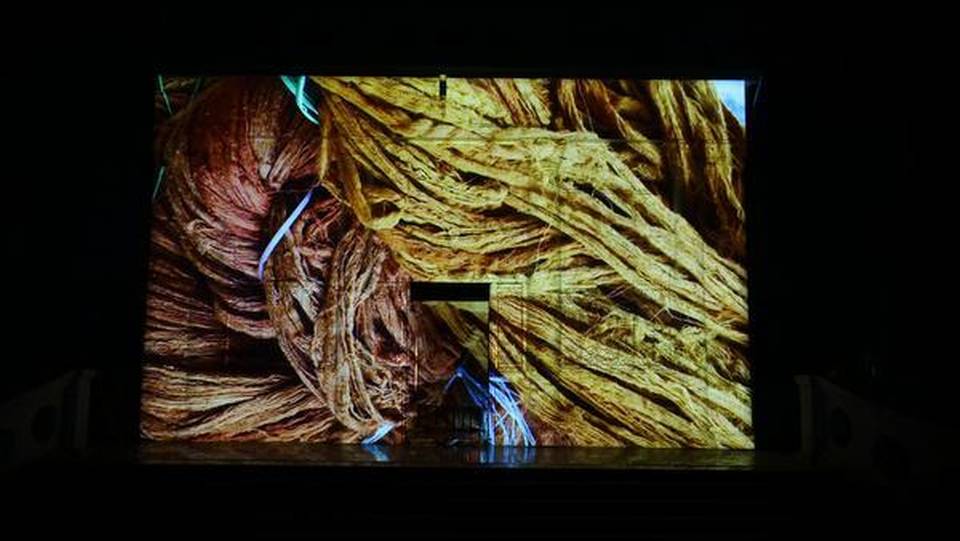Hidden Lily tells the story of Gajendragad’s weavers as part of crafts project, Social Weavers
I walk through the dark entrance of the Government College of Fine Arts on a quiet Saturday evening. From outlines and vague shadows, I figure out that a motley group of people has gathered before the magnificent white-coloured main building of the college. It’s no secret that the building is one of the most beautiful heritage structures in the city. Soon, the very building would transform into a screen on to which a documentary film will be projected. When the clock strikes seven, to the background of the rumbling of a distant train and the howling of street dogs in a fight, the building starts narrating the story of handloom weavers in Gajendragad. The projection takes the shape of the building, replete with parallel scenes that run on either aisles, apart from the central frame. A performance in the form of spoken poetry too, happens in front of the structure.
Hidden Lily, a documentary film, is part of Bengaluru-based 3rd Space Lab Collective’s long-term collaborative project, Social Weavers, in association with the handloom weaving societies of Gujarat, Odisha, Andhra Pradesh and Karnataka and textile artists Shatrughan Thakur and Priyanka Kumari. The goal of Social Weavers is to develop a series of 300 hand-woven saris that interpret landscape as a metaphor, which will culminate in an exhibition. The documentary was developed in collaboration with artist and projection mapping specialist G Craig Hobbs.
Yarn that narrates
The quest started in 2016 for this collective of artists, whose projects are on collaborating cultures. The collective was started in 2012, by Shalini Agrawal and Trena Noval from California and Lalitha Shankar and Shamala Nandesh from Bengaluru. “Shamala and I were on the San Francisco Golden Gate Bridge and were looking at the tourist maps and guides. Then, we came to know that the cable used in the bridge goes around half the Equator in terms of distance,” artist Lalita Shankar says, about the inception of the project. This led Lalitha and Shamala, also an artist, to look at the rich culture of handloom in Bengaluru. “Then the idea of using yarn to cover the distance between San Francisco and Bengaluru came up. But we were sure of using organic cotton and natural dyes to make saris that would cover the distance,” she continues, adding that the geographical landscape, then becomes a metaphor. The distance they were trying to bridge was that of two completely different cultures. And the number of saris required for this, would be 323. “Thirty-five kilometres of yarn will be used to make one sari (warp and weft included)”.
These saris will, in turn, act as canvases. Art from different locations and specific to different communities, will feature on them. And of the 323 saris, 25 have been woven as of now. Lalita hopes that in the next two years, the collective would be able to finish all the 323 works of art. “We have looked at Bhuj, Andhra Pradesh, Gajendragad and Odisha now.” Their next stop is Narayanpet in Telangana. “The design is very specific to the environment it is in. The loom and the way they weave adds to the end product,” she explains, adding that the collaboration with artisans from different locations, was an eye-opener for them. However, she also says that it is not always easy to gain the weavers’ trust. “It is difficult to build trust in them. There is something that pulls them back when it comes to projects like these,” she concludes.
The video mapping (projecting a film on to a building) was done in connection with the Chennai Photo Biennale, on March 22 and 23.
source: http://www.thehindu.com / The Hindu / Home> Entertainment> Movies / by Gowri S / March 25th, 2019
